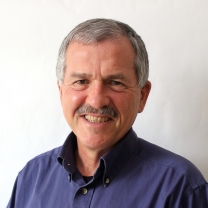 / Oncofertility: Making sure women know!
Subscribe
/ Oncofertility: Making sure women know!
Subscribe

This story begins with a chance meeting with a doctor orchestrating the sperm collection from a 14-year-old boy prior to cancer treatment. I was both amazed by the concept and immediately pivoted to young women. I asked, “Do they have similar options for fertility preservation?” The physician, a good friend of mine, said: “No—they need to focus on surviving the disease!” Hmm…this didn’t add up. I was the basic science director for the Robert H. Lurie Comprehensive Cancer Center at Northwestern University in Chicago and a reproductive scientist. My work in ovarian biology together with my sense that young women had the same hope for surviving their disease as young men, created my passion for the inclusion of young women, adolescents, and pediatric girls in a new field of medicine. I named this field oncofertility. This is a short story about that new field, which is now egalitarian in offering fertile hope in a disease that doesn’t discriminate….
Cancer care has changed dramatically in the last 20 years with earlier diagnostics, the emergence of targeted cancer therapies, methods to reduce radiation dose and field, and localized surgical procedures. With these advances, cancer patients are surviving their disease in increasing numbers and converting what was once a mortal diagnosis into a chronic illness and, in most cases, a curable disease. The data are particularly compelling for pediatric cancer survivors; a patient treated for cancer between the years 1975 and 1979 had a 55% likelihood of surviving five years. In children diagnosed between 2005 and 2011 (the most recent interval for which we have data) that number has risen to 83%. By 2020, it is estimated that 1 in 750 adults will be a survivor of childhood cancer. Although these statistics are encouraging, they raise new concerns about the health of cancer survivors as they age. These concerns are largely related to the off-target effects of the cancer treatments themselves. Cancer survivors are at significant increased risk of second cancers, cardiovascular disease, and death at an early age. A major complication of cancer treatment is compromised reproductive function, which ranges from destruction of gametes to the loss of pituitary and gonadal hormone production. This year there will be 160,000 Americans under the age of 45 diagnosed with cancer. These young women, men, and children have a good chance of survival because cancer drugs have been come more effective and we are diagnosing the disease earlier. And now, they also have a good chance of preserving their fertility.
In 2007 I coined the word “oncofertility” to describe fertility management in the cancer setting. Now young cancer patients have options for fertility management in nearly every disease condition and timeframe. This means that tomorrow’s cancer patient will not only have a better life expectancy, but they may also become expectant of full fertility. New fields of medicine are not invented every day. Oncofertility shares its birthday with another life-changing innovation: the iPhone. Today, we can’t live without our smart phones and oncofertility has become the standard of care. Oncofertility, a word that brought oncology and fertility care together, was not obvious in the beginning—it was extraordinary.
After creating a new word to describe an emerging medical discipline, it is important to create an icon that serves as a central image for the program. The oncofertility logo is a combination of colors and intertwining dots and colors. These combinations embody the interdisciplinarity inherent in our program. The purple is the deep knowledge of self—who I am as a person—while the green exemplifies the hopefulness of tomorrow. The dots represent the eggs, sperm, embryos or tissue that is banked for the future and sweeps up into the graceful turn of the ribbon which then bows out in a subliminally “expectant” state. Not every new idea requires a new name and logo, but in this field, it became a rally point and is used globally as a representation of a set of shared practices and guidelines.
In order to bring clinicians up to date, we created authoritative, multimedia resources in order to assist in this rapidly developing area of work. We developed a multilingual Oncofertility Consortium website for scientists, clinicians, patients, research scholars, and our global partners. This site provides the main portal for news and information through our daily newsfeed, blogs, twitter and Facebook accounts. The site is open to the public to ensure easy and rapid access to information. Unrestricted file access to research protocols, equipment supply lists, and the literature create value for a field where information can be fragmented and hard to derive autonomously. Teams from around the globe use the website as an easy template on which to build their own programs.
The social media intensive parts of the website provide a direct connection between the science and the advocates—an important part of the equation for future clinical research. One of the ‘rules’ of our social media program was that we would define all words that seemed too technical or represent anatomy or physiology that might be unfamiliar to the general public. This created a bit of a headache in the early days with words like “ovarian follicle” defined over and over. To eliminate the “curse of the parentheticals,” we created a website called Repropedia: A Reproductive Health Lexicon that included short, authoritative, definitions for reproductive health terms. This resource has been accessed by more than 100,000 unique users. We hope to continue ensuring that the words we use in reproductive science are clear and do not create confusion; where there is this kind of confusion among the general public, there is a reduction in their knowledge about an area that is critical to their health.
In addition, we created specific web tools for patients, parents, and partners. These include a patient navigation site, an iSaveFertility app and its associated microsite SaveMyFertility.org. These sites were created to ease delivery of materials to patients directly from a doctors’ office. This information is available in English and Spanish and providers can translate documents as needed to suit their patient population. Just as the general public is uncomfortable with discussing the physiological processes of reproduction, so are generalists and oncologists. These sites provide easy pocket guide information for these professionals to have authoritative data at their fingertips and deliver the material to their patients together with a referral.
As a consequence of the focus of scientists and clinicians in this area, we have field-wide advances in follicle biology, new tools for collaboration and mechanisms for increasing and sustaining the pipeline. There is little doubt that the way we are providing care today will change tomorrow; that is how science and medicine work. In fact, it is our hope that the field of oncofertility is a short-term solution to the off-target effects of cancer treatments. We hope that as cancer care improves, treatment effects will be more localized to the disease and impact neither hair follicle nor ovarian follicle and return the patient to health with intact reproductive function. Until that day, oncofertility is a word that serves as a reminder of the need to work together, using different methods that fit the needs of an individual with hopes for a fertile future.
Photo Credit: The Oncology Consortium log, via Web, 27 April 2018.





